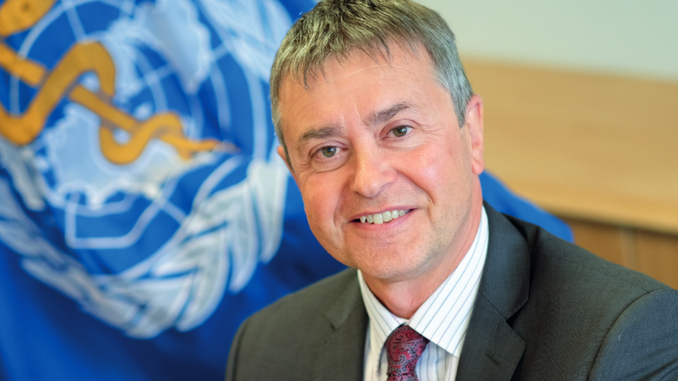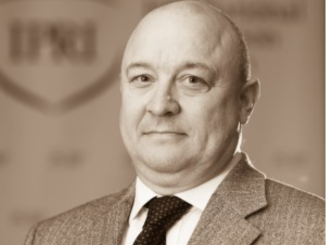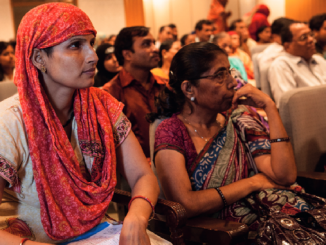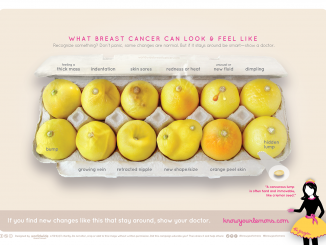
Understanding how cancer wreaks its havoc on the human body is important for the head of the International Agency for Research on Cancer, but his main concern is how to stop it.
In the 30 years he has worked in research, Christopher Wild has been asked many times whether there will ever be a cure for cancer. It is astounding, says the Director of the International Agency for Research on Cancer (IARC), that no one has asked him whether cancer will ever be prevented. “We are not going to treat our way out of cancer,” he tells me, echoing the words he used in February, when IARC published a World Cancer Report revealing that the worldwide cancer burden is expected to rise from 14 million new cases a year in 2012 to a staggering 22 million a year by 2030.
Around 50% of the world’s cancer cases are preventable based on current knowledge, says IARC. And Wild tells me he estimates that around 90% of cancers have an environmental or lifestyle cause – it’s just that we don’t understand the detail yet. So getting to grips with causes and effects transforms the prospects of winning the global cancer battle.
It’s not surprising, then, that Wild feels perplexed that research and funding are currently so concentrated on treatment, not prevention. “Maybe it’s because most people come across cancer when they or someone they know has got the disease, and the first question they ask is ‘Can it be cured?’
“The people who donate to cancer charities mainly do it on the basis that they want to see cures, and that resonates through the charities. It drives their research investment. Governments, universities and the private sector see the economic opportunities in developing new treatments, whereas there is much less money to be made from prevention. These factors combine so that in many Western countries the proportion of cancer research money spent on understanding causes and prevention is a small fraction. And once the direction of travel is started, it continues to be reinforced.”
Wild, now in his second five-year term as director of IARC, is nothing if not ambitious for his remaining four years. He wants to re-orientate the global cancer research agenda towards prevention. And as we sit in the IARC offices in Lyon, France, talking about the prevention priorities – researching how best to implement current knowledge, resourcing measures that are known to work, introducing regulation and legislation – all those astonishing predictions about the global rise of cancer seem less of a cause for despair. Once you look at cancer with a global perspective, there is a world of high-impact measures to be taken without waiting for miracle treatments.
“The number of cases that could be prevented, particularly in low- and middle-income countries, is huge compared with the incremental effect of improved treatment,” he says. “At the same time, we’re clearly not going to discover the cause and be able to prevent every cancer, so the second arm of our approach is early detection to make the treatments we have more effective.”
Wild, a pharmacologist who evolved into a molecular epidemiologist, observes he is motivated by problem-solving rather than the straightforward curiosity that drives many scientists. Since his first association with IARC as a postdoctoral fellow in 1984, his interest in the interplay of environmental, lifestyle and genetic risk factors in causing cancer has evolved, and his fit with the agency has become ever closer.
IARC, part of the United Nations, is the specialised cancer agency of the World Health Organization. It fosters collaboration in cancer research across countries and organisations, bringing together skills in epidemiology, laboratory sciences and biostatistics to identify the causes of cancer so that preventive measures can be introduced.
It has a particular interest in developing collaborative research projects in low- and middle-income countries, where the rise in cancer is fueled particularly by infections, tobacco, alcohol, air pollution and poor diet, among other factors. Around seven of every ten cancer deaths occur in Africa, Asia, and Central and South America.
A Francophile Englishman, Wild has been at IARC’s Lyon headquarters for 17 years of his career, and proudly recounts the agency’s idealistic origins shortly after the Second World War. Emmanuel d’Astier de La Vigerie, a former French Resistance leader who founded the Liberation newspaper and became a politician, was haunted by a letter written by a man who had just lost his wife to cancer, who asked him: “You may be fighting for political causes and peace, but what about fighting this terrible disease?”
D’Astier de La Vigerie called on General Charles de Gaulle, the French President, to act, and the result was a proposal that the major world powers – Australia, France, Germany, Italy, the Soviet Union, the United States, the UK – should levy half a per cent of their military budgets to “found an international institution dedicated to the combat for life, under the effective control of qualified UN institutions”. IARC came into being in May 1965 and was installed in Lyon in 1967 – close to the World Health Organization in Geneva.
Wild laughs at the prospect of IARC still receiving that amount of money from defence budgets: “Can you imagine what we could do!” Today IARC is funded by any WHO member state that chooses to participate – 70% of IARC’s budget is divided equally between participants, with 30% divided according to each country’s contribution to the WHO budget, roughly corresponding to their economic status. The budget for the next two years is more than €40 million, and there are 24 participating states.
It is still an act of generosity for these countries to look beyond national self-interest and donate to a global good, says Wild. But it makes sense that the countries who are members can contribute to the mission of IARC through their scientific expertise, joining with IARC scientists to study cancer anywhere in the world. Recently IARC has increased the involvement of developing countries in its decision-making, through dialogue with countries not represented on its governing body.
“I think that everyone is enthusiastic about emerging economies participating in collaborative efforts, and as a result, their research base is developing. So it’s an exciting time for us.”
Wild believes that IARC’s role in leading the global research agenda can only grow: its positioning alongside WHO and its track record of working worldwide means it is trusted, independent and immaculately connected. But while its research focus and small governance structure mean it is relatively free of the lumbering politics of world health, Wild is also aware that if IARC’s important findings are to be acted upon, they have to be presented to national and global bodies in a relevant and accessible way.
He knows, for example, that IARC’s monographs evaluating carcinogenic risk to humans are already well used by governments for protecting populations. Since the early 1970s, IARC has convened working groups of experts to evaluate evidence on chemicals, biological factors and lifestyle influences believed to be linked to cancer. This has resulted in 111 advisory monographs, direct in style and with clear conclusions.
One of the latest concludes that outdoor air pollution from transport, power generation, industry, domestic heating and cooking is “not only a major risk to health in general, but also a leading environmental cause of cancer deaths” – from bladder as well as lung cancer. Around 1 in 10 lung cancers may be associated with air pollution (including smoke inhaled from indoor fires in developing countries), it found. Such clear findings can lead to practical interventions such as clean burners replacing indoor fires, the reduced use of diesel generators and more stringent regulations on industry and transport.
“Clear findings can lead to practical interventions, as clean burners replacing indoor fires”
In recent years, IARC has been working more closely with WHO and other partners to ensure that the research it produces will be used. IARC produces handbooks of cancer prevention, evaluating the scientific evidence on the protective effects of interventions such as sun protection or weight control. As part of this programme, an IARC working group is about to examine the benefits and risks of breast cancer screening, and Wild has been discussing with WHO how to ensure that the scope is correct, and that the outcomes are clearly presented and easily incorporated into policy guidelines.
This appreciation of the need to bring science down to a human level isn’t simply a pragmatic understanding of good communication on Wild’s part. For him, seeing the people at the receiving end of science has had a profound effect on his motivation and career direction.
When he completed his pharmacology degree at Manchester University in 1980, Wild felt at a loss what to do next. He hadn’t particularly enjoyed the course and hadn’t a clue how to use his new qualification. So he took the advice of a scientific supervisor and began a PhD based at the Christie Cancer Hospital in Manchester, making monoclonal antibodies to study damaged bases of DNA in cultured cells.
It wasn’t this lab work which determined his career, however – it was the walk he took to the cafeteria every lunchtime.
“I had to pass by the children’s ward,” he says. “And the emotional reaction I had to those young people made me realise that what I wanted to do on a very simple level was help people with this disease. I knew I was not a mechanistic person excited by how things work fundamentally. I needed to see a problem and bring the necessary tools to bear.”
He completed his thesis, failing to see the relevance of his lab work and believing that science was not for him. But a PhD supervisor who had completed a post-doctoral fellowship with IARC suggested that Wild did the same. “I thought a year in Lyon sounded quite nice,” he says. “I’d always liked France and the language.”
About the same time he realised that the antibodies he had been working on could be used as sensitive tools for determining exposure to carcinogens in the environment, particularly nitrosamines, which were suspected to cause oesophageal cancer. His application went in, and then everything fell into place.
“First, I discovered the relevance of my subject – I found it incredible that you could measure changes in people who had been exposed to toxins and then do something to counter it. And then I met the people from all over the world at IARC who were not thinking about career development but were there because they wanted to solve the problem of cancer. Their way of working was an inspiration.”
It wasn’t long before Wild discovered the importance of epidemiology – his supervisor correctly informed him that the identification of most human carcinogens was due to epidemiological studies. So at IARC he began carrying out field work with epidemiologists, applying his laboratory methods to biological samples.
His first trip to Africa was hugely formative, again because it brought the human factor into science. A clinician colleague took him to meet liver cancer patients in a hospital in The Gambia, West Africa – people affected by carcinogens such as dietary toxins and hepatitis viruses.
“The first person I met has really stuck with me. He was an old man, dying, who had a hugely distended abdomen. And I was standing there, a white man in a white coat in the clinic, and the look he gave me said: ‘This is the man who is going to solve my problem.’ He was desperate. And I felt absolutely useless, a spare part. I wasn’t a medical doctor and there weren’t even adequate painkillers available for him. Later I realised he was in his early 30s.”
It provided more motivation. The question to answer was: “Can you develop tests to measure exposure to carcinogens, and then use that information to reduce exposure?” He concentrated on exposure to naturally occurring aflatoxins (a type of mycotoxin), commonly found in poorly stored peanuts and a known cause of liver cancer, which accounts for 25% of male cancer deaths in west Africa and frequently kills people before they are 45. He developed a blood test that measured aflatoxin exposure which, he says, has “transformed our ability to link exposure to disease outcomes”.
“So that’s been the crux of my career – taking the latest advances in laboratory science and, rather than leaving them to take their natural route to the clinic, trying to drag them out into population-based work to understand the causes of a condition, and then use similar biomarker methodologies to evaluate interventions.” In Africa, for example, Wild and his colleagues demonstrated through blood tests that in the villages where farmers had been provided with expertise in storing and processing their peanut crop, exposure to aflatoxins was reduced by 60%. It’s been gratifying seeing results, says Wild.
Another striking outcome came from IARC’s work in The Gambia in the mid-1980s. Alongside mycotoxins, the other major cause of liver cancer in Africa is hepatitis B. IARC began an infant vaccination trial – knowing that it would have to wait at least 40 years to gauge its impact on cancer rates in adults. But already, 30 years on, research has found that hepatitis B infection rates are now less than 1.0% among young Gambian children compared with 15% in the ’80s – that means infection rates among children are now 20-fold lower than before the vaccination programme.
“Infection rates among children are now 20-fold lower than before the vaccination programme”
Wild rose up the IARC ranks, becoming head of its Unit of Environmental Carcinogenesis when he was just 34. His only career foray out of Lyon, other than a year’s fellowship at the Netherlands Cancer Institute in the mid-1980s, came two years later, when he was offered the opportunity to become the first Chair of Molecular Epidemiology at the University of Leeds, in the UK. He stayed there between 1996 and 2008 – setting up the Leeds Institute of Genetics, Health and Therapeutics, and seeing his three children through their schooling. The academic setting was “another world” he says, but when the IARC director’s job came up, he took stock. “I suddenly realised my computer wallpaper was Lyon. The pictures on my wall were Lyon.” It was clear where he wanted to be, and his wife, a neuroscientist, gave up a job in NHS clinical trials to come and share the new challenge with him.
Today, he highlights two priorities for IARC. The first is to improve cancer registries. “People don’t get very excited about cancer statistics, but it’s the foundation of cancer control. If you don’t know the patterns of cancer in a particular country, or the projections, how do you know where to invest your money? We’ve been trying to improve the quality of cancer registration for 40–50 years.” Less than 10% of the African population is covered by cancer registries.
For the past four years IARC has been implementing a new model to encourage registration, setting up regional hubs responsible for developing registries and providing training and resources. There are currently four hubs, with more to come. A hub in Mumbai, for example, is supporting the development of cancer registries in Central, Eastern and Southern Asia. Wild believes there are already signs of “significant movement” to improve the quality of data informing policy.
The second challenge is to address the gaping holes in current cancer knowledge, particularly in the area of implementing prevention strategies. It is frustrating, says Wild, that although some cancer prevention strategies – such as screening or vaccines – are known to be effective, getting them operational in low- and middle-income countries, where resources are limited, is often incredibly difficult. For example, even though IARC classified mycotoxins as dangerous human carcinogens two decades ago, and despite evidence that they contaminate much of the diet in the developing world, national governments have done very little to confront the problem.
“There are barriers to implementation we don’t understand, and to me that’s a very neglected area of cancer research,” says Wild.
IARC is aiming to conduct more formalised studies into how to convert good ideas into good practice. It has been working with the Thai government, for example, to examine participation in its colorectal cancer screening programme. Its research revealed that there was higher participation in rural than urban areas, and that women were more likely to take part than men, and this information is being used by the government to refine the programme as it up-scales nationally.
Another important initiative has been in HPV (the human papilloma virus). HPV causes cervical cancer, the fourth most common women’s cancer globally. In sub-Saharan Africa, the annual cervical cancer death rate is 22.5 per 100,000 women compared with 2.5 per 100,000 in North America. The current vaccination schedule is three spaced doses – but this presents implementation problems, particularly cost and compliance. IARC has been studying whether two doses provide a similar response to three. The indications are that they do, so WHO is now recommending a two-dose regimen. “That will have a huge impact on access to the vaccine in high cervical cancer regions.”
There are a hundred and one potential prevention measures on hold because of lack of research. It is striking, says Wild, that when IARC experts come together to review evidence for monographs or handbooks on prevention, it rapidly becomes clear that studies cluster in particular areas, and some research is repeated over and over again. “There are glaring gaps, and IARC tries to point out the research priorities. But if someone took a global overview, and coordinated plugging the gaps, we’d all be much more efficient.”
Wild knows there are priorities beyond prevention: in many developing countries there is no access to basic medicines or palliative care, so even small treatment improvements can go a long way. Improving early detection therefore has to be a priority with common cancers where cause is poorly understood, such as prostate cancer, or where primary prevention measures are difficult, as with breast cancer (where rising rates are due in part to women having fewer children at a later age and breast feeding less).
“Maybe it’s my optimistic nature, but I don’t think it’s a hopeless situation. I think there is lots we can do in the face of these projected rises.” Incidence of breast cancer has been soaring in low- to middle-income countries, with the annual rate of new cases predicted to rise by a further 60% over the next 20 years. A clear strategy for the early diagnosis and treatment of breast cancer in these countries would make a huge difference, Wild believes.
“In countries like South Korea, which had no national screening programme for breast cancer, we saw huge improvements in survival because the cancers are being caught earlier through awareness and patients getting access to the right treatments quickly.”
Wild’s optimism springs to life when he points out that the very fact that cancer rates vary so much internationally testifies to the possibility of reversal. In much of eastern and southern Africa, oesophageal cancer is the most common cancer in men, yet there is hardly a case in West Africa. Similarly, colorectal cancer has been historically common in the United States population of East Asian origin, yet rare in Japan.
“So if you take all those countries where a given cancer is at its lowest rate, that is presumably the rate that isn’t due to the environment or lifestyle. The rate above that must be modifiable. That’s where the hope comes from.”
Even if IARC managed to put its finger on all the modifiable cancer factors, however, Wild believes some actions simply have to be enforced to control cancer. No longer does he believe that people simply change their behaviour if you point out to them that what they are doing is dangerous. The pressures on people to consume are so great that policy and regulation are the most effective means of change, he believes. Increasing the price of cigarettes is the most effective smoking control measure, and if all countries implemented the WHO framework convention on tobacco control “there would be a big impact”.
Similar measures would help cut alcohol consumption, and regulation is part of the answer to air pollution, says Wild. And though he is reluctant to be drawn too far on regulating the food industry, he feels nutrition is the next “big challenge”.
“There’s debate at the moment around taxation on sugary drinks and energy-dense foods. Sometimes policy runs ahead of the evidence, so again we need to design studies and measure the impact of these sorts of interventions.”
But he acknowledges that industry has not always helped answer such questions, and has sometimes complicated them. “I’m aware that if you don’t have industry funding for nutrition research, it’s very difficult to conduct studies at all and there’s great emphasis on academic collaboration with industry in some countries. At the same time, governments want independent advice. So I think there has to be some high-level thinking about areas of research that need to be independent of industry and how to fund them.” He mentions IARC’s research into HPV vaccination as an example of research that has been influential because of its independence from industry.
“We need some high-level thinking about areas of research that must be independent of industry, and how to fund them”
Towards the end of the time allocated for our interview we talk more informally, comparing notes on our similar upbringings in Manchester and our playground experiences pretending to be Manchester United players – Wild still played football until he turned 50, and even now he says watching it “keeps me going”. He tells me about the strong Christian faith he developed at university, and how he continues to be intrigued by how you put Christian principles into practice in a scientific setting.
And he tells me how he has tried to nurture a set of values that IARC uses in all its interactions with organisations and people: courtesy, honesty and generosity. “It’s not just what we do, but how we do it that’s important – because as an international agency people are putting trust in you.” It’s another example of Wild’s personal determination not to let cool science or hard politics lose sight of the people it is designed to help, or the people who make it happen.
“I want to leave the agency with a good infrastructure, a mission and an adapted scientific programme that will equip it for at least the next 20 years. Then I will walk away very satisfied, I think.”






Just re-read this article on IARC and interview with director Christopher Wild. Only increases my admiration for IARC’s work and hope that they gain more recognition for their immensely important research on cancer prevention and early detection.